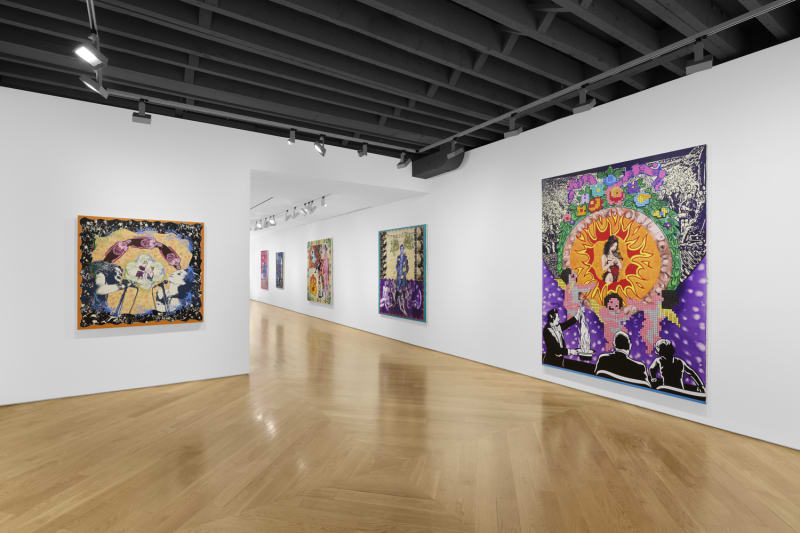Carole Caroompas
Past exhibition
Overview
|
Installation Views
Works
-
 Carole CaroompasHeathcliff and the Femme Fatales Go On Tour: Wild Is The Wind, 1998
Carole CaroompasHeathcliff and the Femme Fatales Go On Tour: Wild Is The Wind, 1998 -
 Carole CaroompasBefore and after Frankenstein: The Woman Who Knew Too Much: Spectre + Emanation I, 1993
Carole CaroompasBefore and after Frankenstein: The Woman Who Knew Too Much: Spectre + Emanation I, 1993 -
 Carole CaroompasBefore and after Frankenstein: The Woman Who Knew Too Much: Spectre + Emanation II, 1993
Carole CaroompasBefore and after Frankenstein: The Woman Who Knew Too Much: Spectre + Emanation II, 1993 -
 Carole CaroompasHeathcliff and the Femme Fatales Go On Tour: A Cuckoo’s History, 1998-1999
Carole CaroompasHeathcliff and the Femme Fatales Go On Tour: A Cuckoo’s History, 1998-1999
-
 Carole CaroompasHeathcliff and the Femme Fatales Go On Tour: Blue Impressions Are Left On Her Colorless Skin, 2001
Carole CaroompasHeathcliff and the Femme Fatales Go On Tour: Blue Impressions Are Left On Her Colorless Skin, 2001 -
 Carole CaroompasDancing With Misfits: Eye Dazzler: Les Deasaxes, 2007
Carole CaroompasDancing With Misfits: Eye Dazzler: Les Deasaxes, 2007 -
 Carole CaroompasHester and Zorro: In Quest of A New World: The Object of Severe and Universal Observation, 1996
Carole CaroompasHester and Zorro: In Quest of A New World: The Object of Severe and Universal Observation, 1996 -
 Carole CaroompasDancing With Misfits: Eye Dazzler: Watch Out For Those Pretty Feet, Dear, 2006
Carole CaroompasDancing With Misfits: Eye Dazzler: Watch Out For Those Pretty Feet, Dear, 2006
Press

















